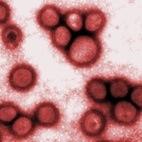Stem Cell Therapy
In recent years there has been a lot of discussion concerning the use of stem cells in both animals and humans. The initial work with stem cell therapy has been done in horses for the treatment of ligamentous and skeletal muscle injuries resulting in lameness. In the last five years this technology has carried over into the companion animal field primarily in dogs. At the animal hospital I work at we’ve been doing stem therapy for osteoarthritis for 3 years in 20 dogs. I’ve also had opportunity to treat a Shar-Pei in early kidney failure with systemic stem cell therapy...




